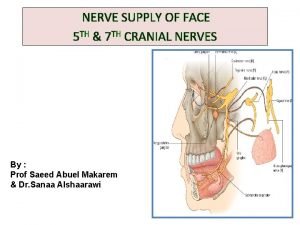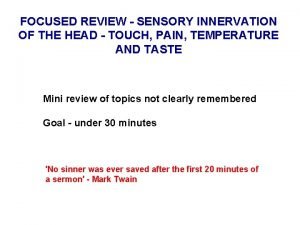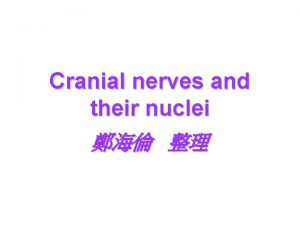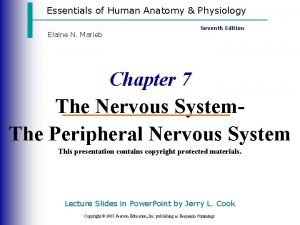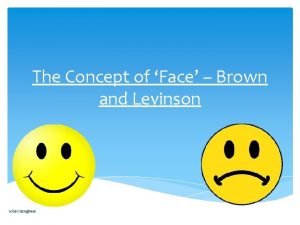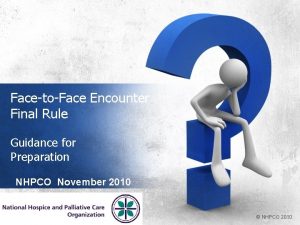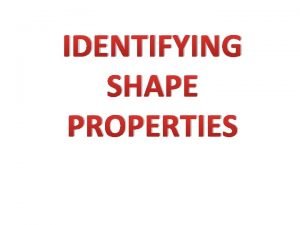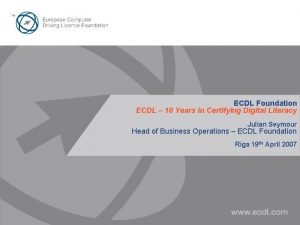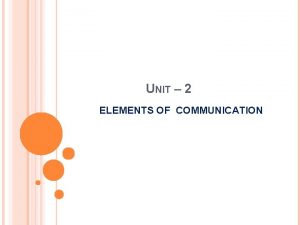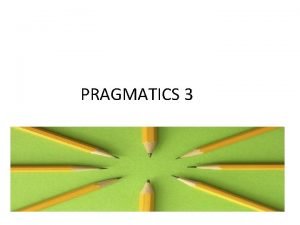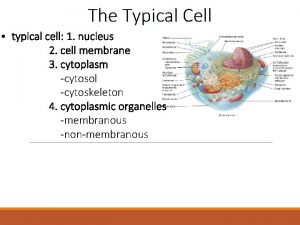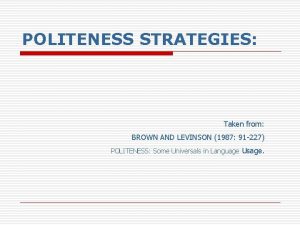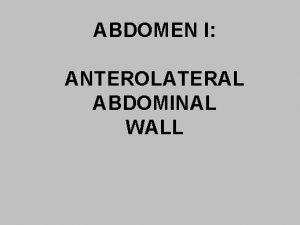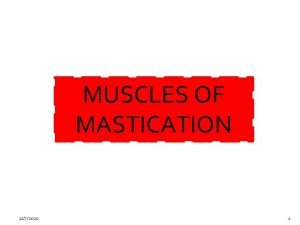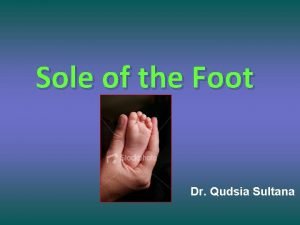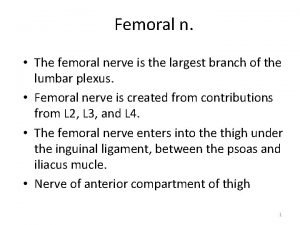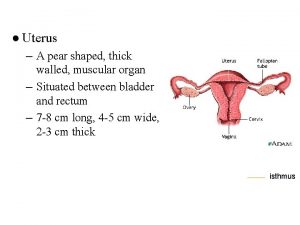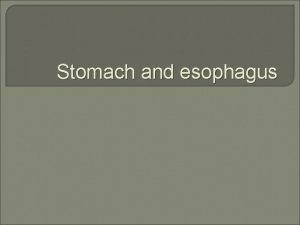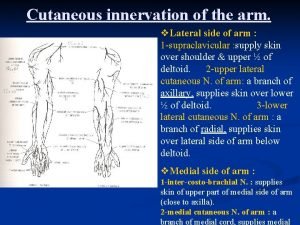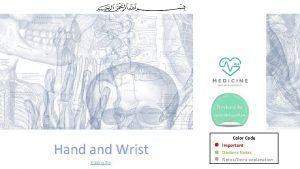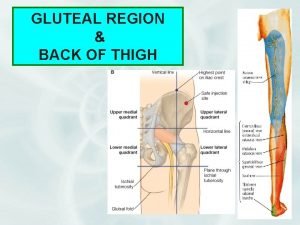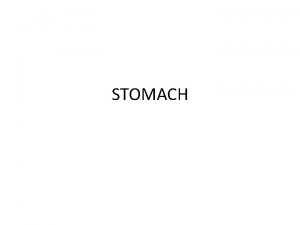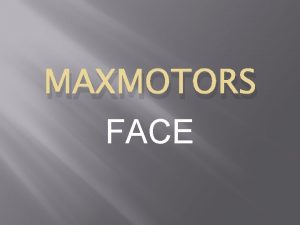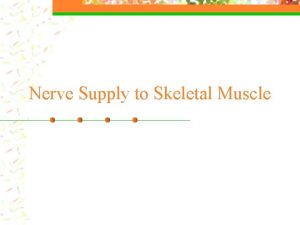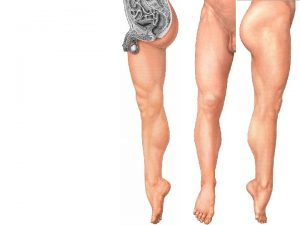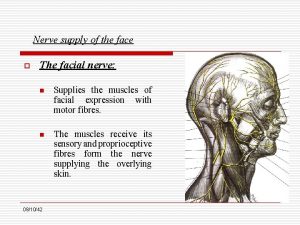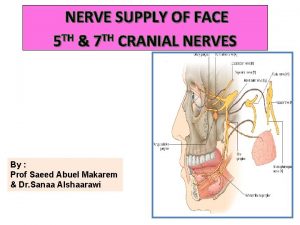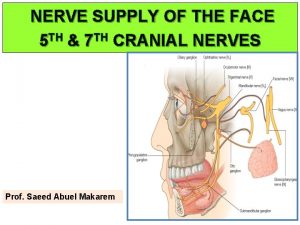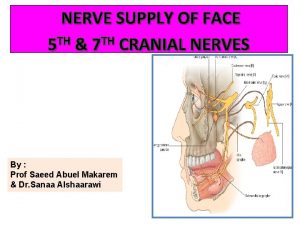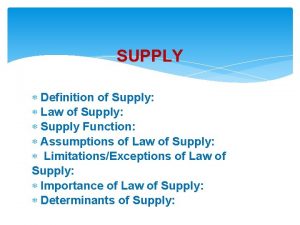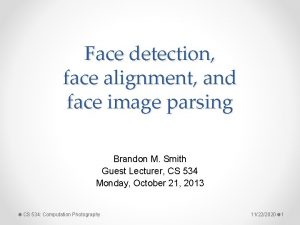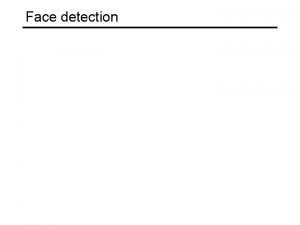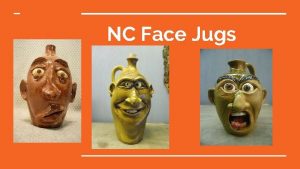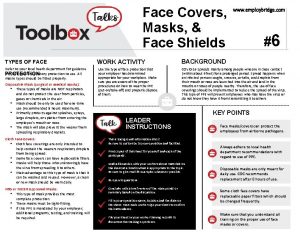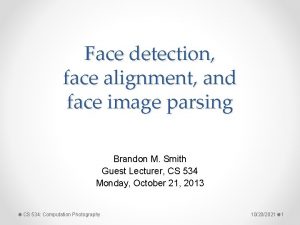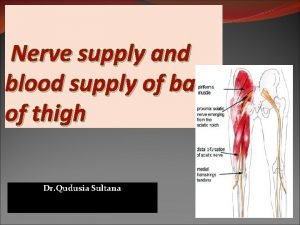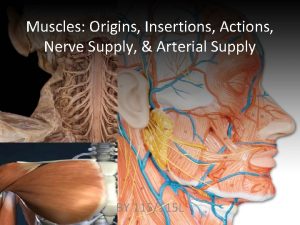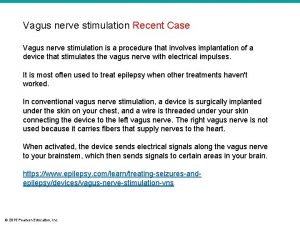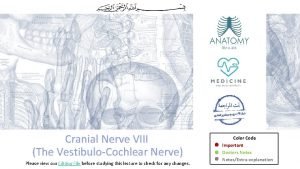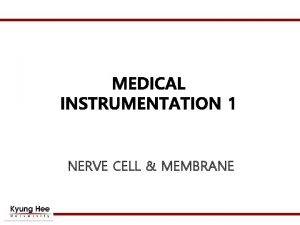NERVE SUPPLY OF FACE 5 TH 7 TH
























- Slides: 24

NERVE SUPPLY OF FACE 5 TH & 7 TH CRANIAL NERVES By : Prof Saeed Abuel Makarem & Dr. Sanaa Alshaarawi

OBJECTIVES By the end of the lecture, students shouldbe able to: Ø List the nuclei of the deep origin of the trigeminal and facial nerves in the brain stem. Ø Describe the type and site of each nucleus. Ø Describe the superficial attachment of trigeminal and facial nerves to the brain stem. Ø Describe the main course and distribution of trigeminal and facial nerves in the face. Ø Describe the main motor & sensory manifestation in case of lesion of the trigeminal & facial nerves.

TRIGEMINAL NERVE Ø Type: Mixed (sensory & motor). Ø Fibers: 1. General somatic afferent: Carrying general sensations from face. 2. Special visceral efferent: Supplying muscles developed from the 1 st pharyngeal arch, (8 muscles).

TRIGEMINAL NERVE NUCLEI(Deep origin) 3 sensory + 1 Motor

Ø Four nuclei: (3 sensory + 1 Motor). Ø General somatic afferent: 1. 2. 3. Mesencephalic (midbrain &pons): receives proprioceptive fibers from muscles of mastication. Principal (main) sensory (pons): receives touch fibers from face & scalp Spinal (pons, medulla & upper 2 -3 cervical segments of spinal cord): receives pain & temperature sensations from face & scalp. Ø Special visceral efferent: 4. ü ü Motor nucleus (pons): supplies: Four Muscles of mastication (temporalis, masseter, medial & lateral pterygoid). Other four muscles (Anterior belly of digastric, mylohyoid, tensor palati & tensor tympani). TRIGEMINAL NERVE NUCLEI

TRIGEMINAL GANGLION Ø Site: Ø Occupies a depression in the middle cranial fossa. Ø Importance: Contains cell bodies: 1. Whose dendrites carry sensations from the face. 2. Whose axons form the sensory root of trigeminal nerve.

TRIGEMINAL NERVE Ø Emerges from the middle of the ventral surface of the pons by 2 roots (Large Lateral sensory root & small medial motor root). Ø Divides into 3 divisions (dendrites of trigeminal ganglion): 1. Ophthalmic. 2. Maxillary. 3. Mandibular. Ø Axons of cells of motor nucleus join only the mandibular division.


OPHTHALMIC (PURE SENSORY) Ø Divides into: 3 branches: Ø Frontal, Lacrimal & Nasociliary which pass through superior orbital fissure to the orbit 1. Frontal: supplies skin of face & scalp. 2. Lacrimal: supplies skin of face & lacrimal gland. 3. Nasociliary: supplies skin of face, nasal cavity & eyeball. 1 2 3

MAXILLARY (PURE SENSORY) Ø Supplies: 1. Upper teeth, gums & maxillary air sinus (posterior, middle & anterior superior alveolar nerves). 1. Face: (zygomaticofacial & infraorbital nerves).

MANDIBULAR (MIXED) Ø SENSORY BRANCHES: 1. Lingual: General sensations from anterior 2/3 the of tongue. 2. Inferior alveolar: Lower teeth, gums & face. 3. Buccal: Face, (cheek on upper jaw) 4. Auriculotemporal: auricle, temple, parotid gland & TMJ. Ø MOTOR BRANCHES: to 8 muscles (4 muscles of mastication & other 4 muscles). 4 3 1 2

Trigeminal Neuralgia • Compression, degeneration or inflammation of the 5 th cranial nerve may result in a condition called trigeminal neuralgia or tic douloureux. • This condition is characterized by recurring episodes of intense stabbing excoriating pain radiating from the angle of the jaw along a branches of the trigeminal nerve. • Usually involves maxillary & mandibular branches, rarely in the ophthalmic division.

FACIAL NERVE • Type: Mixed ( Motor, special sensory, parasympathetic). Ø Fibers: 1. Special visceral afferent: carrying taste sensation from anterior 2/3 of the tongue. 2. Special visceral efferent: supplying muscles developed from the 2 nd pharyngeal arch. 3. General visceral efferent: parasympathetic secretory fibers to submandibular, sublingual, lacrimal, nasal & palatine glands.

FACIAL NERVE NUCLEI Ø 3 Nuclei : Ø Special visceral afferent: (nucleus solitarius): receives taste from the anterior 2/3 of tongue. Ø Special visceral efferent: motor nucleus of facial nerve: supplies: muscles of face, posterior belly of digastric, stylohyoid, platysma, stapedius, and occipitofrontalis. Ø General visceral efferent: superior salivatory nucleus: sends preganglionic parasympathetic secretory fibers to sublingual, submandibular, lacrimal, nasal & palatine glands. 2 1 3

COURSE OF FACIAL NERVE Ø Emerges from the cerebellopontine angle by 2 roots: 1. Medial motor root: contains motor fibers. 2. Lateral root (nervous intermedius): contains parasympathetic & taste fibers.

COURSE OF FACIAL NERVE Ø Ø Passes through internal auditory meatus to inner ear where it runs in facial canal. Emerges from the stylomastoid foramen & enters the parotid gland where it ends.

BRANCHES OF FACIAL NERVE Ø In facial canal: 1. 2. 3. Greater petrosal nerve: carries preganglionic parasympathetic fibers to lacrimal, nasal & palatine glands. Chorda tympani: carries: a) preganglionic parasympathetic fibers to submandibular & sublingual glands. b) taste fibers from anterior 2/3 of tongue. Nerve to stapedius. control the amplitude of sound waves from the external environment to the inner ear. N. B. : Geniculate ganglion: contains cell bodies of neurones ; its fibres carrying taste sensations from anterior 2/3 of tongue; ending in solitary nucleus in M. O. Lies in internal acoustic meatus. 3 1 2

BRANCHES OF FACIAL NERVE Ø Just as it emerges from the stylomastoid foramen it gives: 1. Posterior auricular: to occipitofrontalis muscle. 2. Muscular branches to posterior belly of digastric & stylohyoid. Ø Inside parotid gland: gives 5 terminal motor branches: Ø Temporal, Ø Zygomatic, Ø Buccal, Ø Mandibular & Ø Cervical…. To the muscles of the face.

Bell’s Palsy • Damage of the facial nerve results in paralysis of muscles of facial expressions : Facial (Bell’s) palsy; lower motor neuron lesion (whole face affected) • NB. In upper motor neuron lesion (upper face is intact). § § § § § Face is distorted: Drooping of lower eyelid, Sagging of mouth angle, Dribbling of saliva, Loss of facial expressions, Loss of chewing, Loss of blowing, Loss of sucking, Unable to show teeth or close the eye on that side.

THANK YOU & BEST LUCK

SUMMARY Ø Both trigeminal & facial nerves are mixed. Ø Nuclei of trigeminal nerve are found in midbrain, pons & medulla. They are of the general somatic afferent & special visceral efferent types. Ø The trigeminal nerve emerges from the pons and divides into: ophthalmic, maxillary & mandibular divisions that receive sensory supply from the face (with an exception of a small area over ramus of mandibleular nerve by great auricular nerve C 2, 3). Ø All motor fibers are included in the mandibular division & supply muscles of mastication.

SUMMARY Ø Nuclei of facial nerve are found in pons. They are of the special visceral afferent & efferent types, as well as general visceral efferent type. Ø The facial nerve emerges from the cerebellopontine angle, gives motor fibers to muscles of facial expression, secretory fibers to submandibular, sublingual, lacrimal, nasal & palatine glands & receives taste fibers from anterior 2/3 of tongue.

Lower Motor Neuron Lesion §Results from injury of facial nerve fibres in internal acoustic meatus; in the middle ear; in the facial canal or in parotid gland. §Manifested by complete paralysis of facial muscles on the same side of lesion. §If lesion of facial nerve above the origin of chorda tympani and nerve to stapedius, the paralysis of facial muscles will be associated with : §Hyperacusis : sounds are heared more acute due to paralysis of stapedius ms. §Loss of taste sensation from anterior 2/3 of tongue. Upper Motor Neuron Lesion §This occurs after injury to the pyramidal tract (corticonuclear). §Leads to paralysis of facial muscles of lower ½ of face of opposite side but the upper ½ of the face not affected because the upper ½ of facial nucleus receives fibres from both corticonuclear tracts, while the lower ½ of the facial nucleus receives fibres from the coticonuclear tract of opposite side only. For the Students

TEST YOUR SELF ! Ø Stimulation of which of the following nerves could lead to salivation and lacrimation? : a) Facial. b) Glossopharyngeal. c) Trigeminal. d) Vagus. Ø Lesion of mandibular nerve may result in: a) Loss of sensation of skin over the nose. b) Loss of lacrimation. c) Loss of sensory supply of upper teeth. d) Loss of general sensations of anterior 2/3 of tongue.
 Nerve supply of face
Nerve supply of face Sensory innervation of nose
Sensory innervation of nose Trigeminal nerve which cranial nerve
Trigeminal nerve which cranial nerve Parasympathetic division
Parasympathetic division Kiran sanghera
Kiran sanghera Face to face class
Face to face class Face-to-face narrative examples
Face-to-face narrative examples I have one curved face and one flat face what am i
I have one curved face and one flat face what am i Face to face ecdl
Face to face ecdl Site:slidetodoc.com
Site:slidetodoc.com To hide her face for her fans the fairer face
To hide her face for her fans the fairer face Preference structure in pragmatics
Preference structure in pragmatics Pros and cons of telephone interviews
Pros and cons of telephone interviews Cis face and trans face
Cis face and trans face Brown and levinson (1987)
Brown and levinson (1987) Transpyloric plane
Transpyloric plane Menisco temporal compartment
Menisco temporal compartment Abductor hallucis nerve supply
Abductor hallucis nerve supply Nerve supply
Nerve supply A pear shaped organ
A pear shaped organ Anterior stomach
Anterior stomach Musculocutaneous nerve supply
Musculocutaneous nerve supply Hand color code
Hand color code Nerve in the gluteus maximus
Nerve in the gluteus maximus Parts of stomach
Parts of stomach
